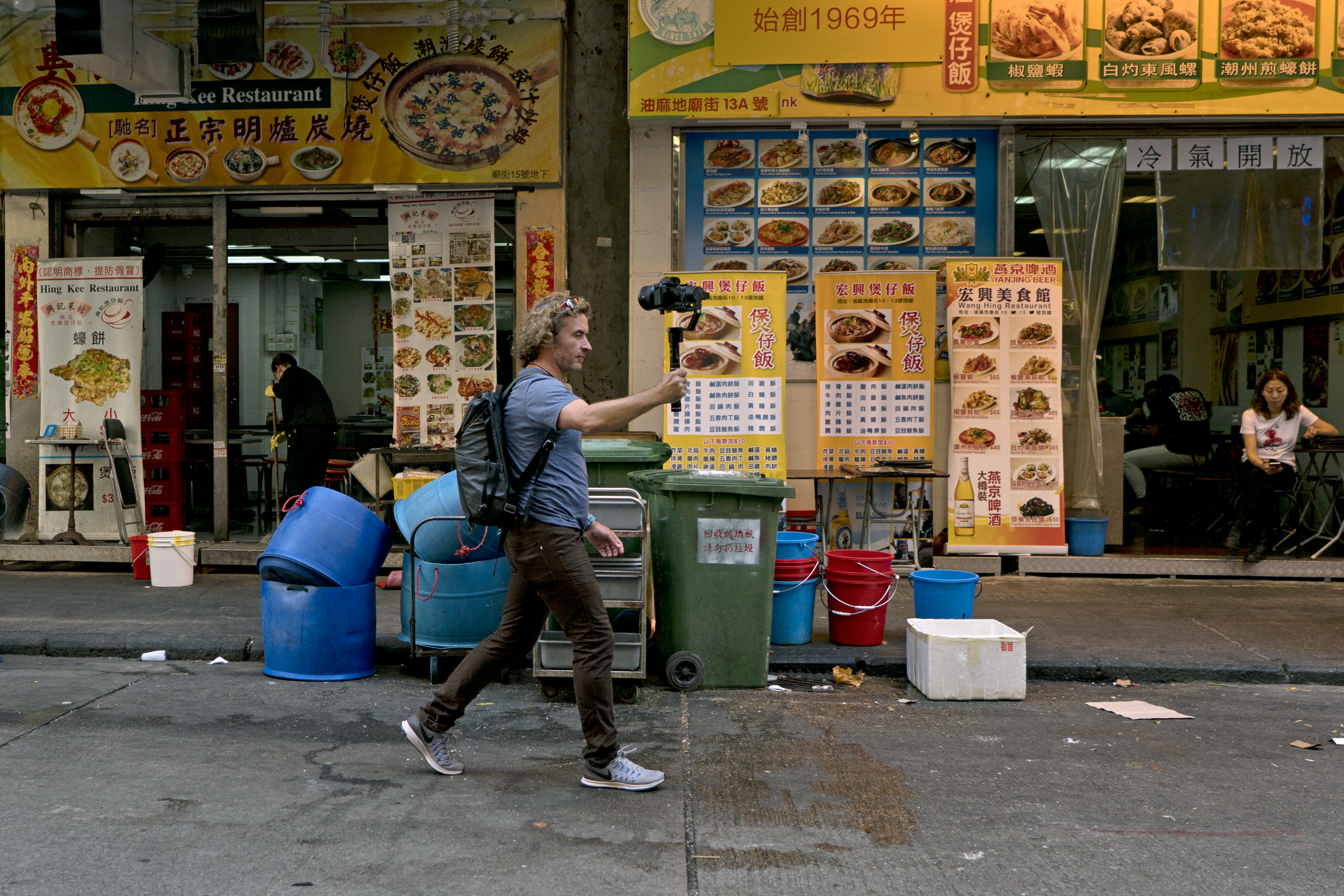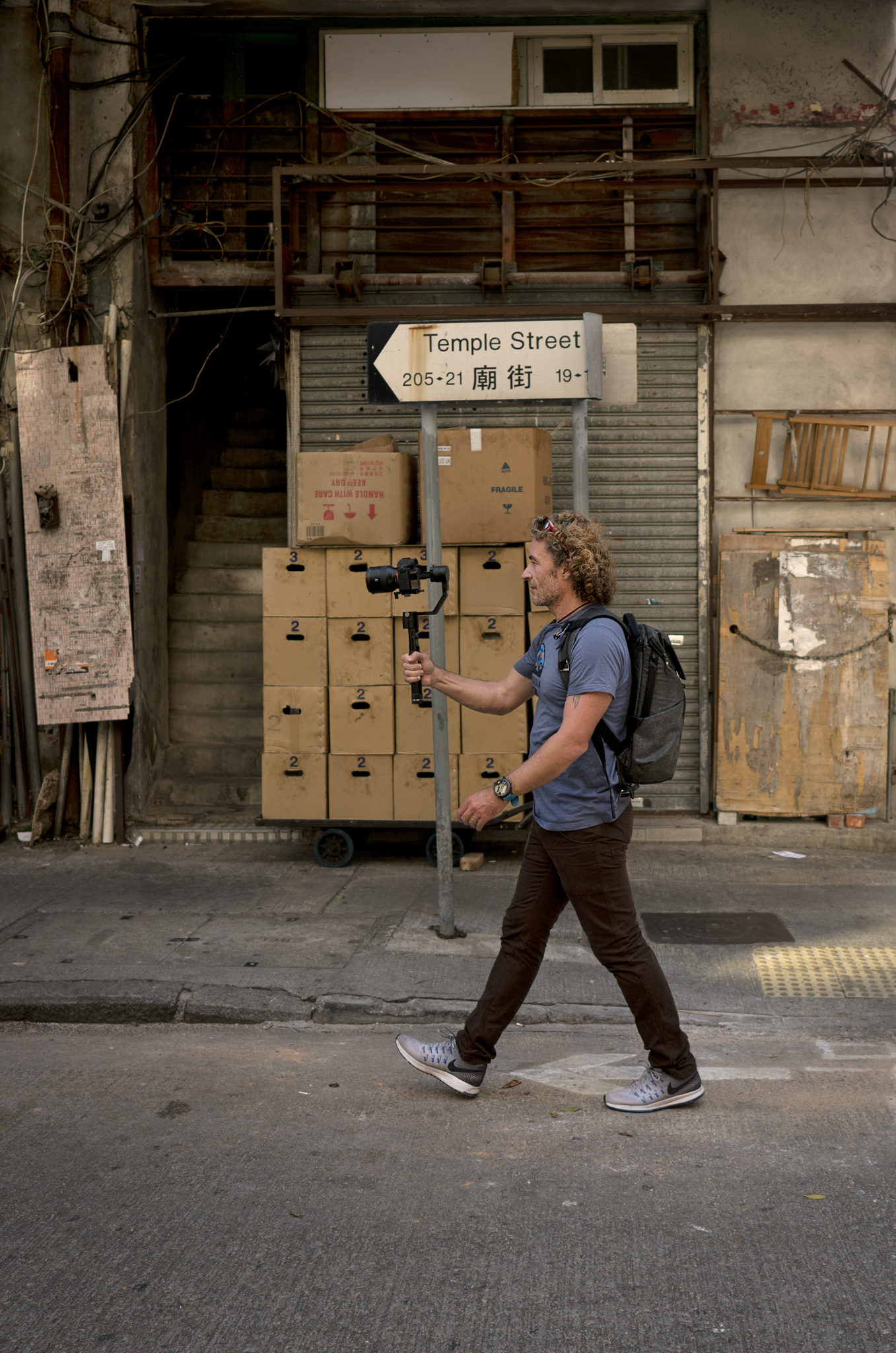
There is no trailer for ‘Nepalese Drug Users in Hong Kong’. In fact, I can’t tell you who the main protagonists are. It is longer in time length than MIRA or anything I have produced and I definitely won’t be submitting this one to BANFF or any other adventure mountain film festivals. In fact, it will not be publicly available for viewing anywhere aside from university and research forums. So why is this the case & what’s all this about?
In 2001, I started working on doctoral research for a PhD. The focus of the research is heroin use in the Nepalese community in Hong Kong. As part of my Thesis output, I filmed a documentary over the course of a year, where I worked closely with Nepalese heroin users to capture issues that they and other drug users face. I mainly filmed on the back streets of Hong Kong and kept this project fairly quiet for obvious reasons.

It was very challenging on many levels: creatively, technically and physically. I mainly had to film during the night in areas where heroin is bought and sold, on building staircases, and in places where discretion was essential. Before I even started filming, I had to spend a long time building trust as you cannot just rock up with a camera and expect to film these issues without a huge degree of trust.
Quick Stats:
Time spent with participants & in research area before filming: 273 hours
Filming in interview situation: 62 hours
Filming with participants (non interview situation) : 11 hours
Contextual filming (B roll) :104 hours
Total Filming Hours: 450 hours
Editing: 113 hours.
This included recording of audio narration, constructing of film after thematic analysis, subtitles, colour grading and audio mixing.
I had no crew. I filmed, operated sound and camera as well as interviewing drug users on camera. This was a type of solo work that took me to new levels of creativity & pressure. Taking equipment in & out of drug markets and areas where prying cameras are definitely not welcome then I had to go with very lightweight & discreet cameras that could work in very low light. Everything had to fit in a bag that did not look like a camera gear bag [Peak Design Everyday Backpack was my choice]. I had a mini studio on my back that could go unnoticed with a Sony A7r2, Zhiyu Crane gimbal, Rode shotgun mic, 1 lens [Zeiss Baths 25/2], mini tripod & batteries tucked away.

This brings me back to the point of why this film will not be publicly available. The people in the film shared personal experiences related to their drug use and I filmed street drug markets and other aspects of drug behaviour. As part of the research ethics process and agreements I made with those who are included in the film, I cannot show this in the normal public settings such as film festivals & public screenings. However, I can screen this at universities and academic film festivals as these come under ‘research and academic’ purposes.
‘Nepalese Drug Users in Hong Kong’ will be screening during December 2018 at Kings College London, University of York, University of West London & University of Manchester.

Here is the official abstract for ‘Nepalese Drug Users in Hong Kong’ :
Over the past decade in Hong Kong, there has been a growing discussion in the media of the needs of the minority ethnic communities in Hong Kong. Within this has been the recognition that the Nepalese community is dealing with a heroin use problem that is disproportionate to its’ size when compared to other communities. There has been an attempt to quantify the scale of the issue but there is a gap in qualitative understanding of this complex issue.
This research employed visual methods while combining an auto ethnography approach with a cultural knowledge of how drug markets operate to capture the experiences of drug users within the Nepalese community and consequentially providing an insight into this world in a manner that has not yet been achieved. Namely, with cameras with the objective of further understanding the social variables that are contributing to the drug misuse problem and to comprehend the implications of access to treatment and other services. By investigating the role that caste, gender, religion and migration are having on four Nepalese drug users, questions are posed for the Hong Kong treatment system in terms of its’ capacity to address these issues and proposes a framework for developing culturally appropriate interventions for minority ethnic drug users that are currently dropping out of services or simply not engaging.
Hong Kong is one of the most densely populated territories around the world that has achieved a relatively high degree of prosperity, a tension exists with various people groups wanting to migrate and make this territory their home in a 1,000 square kilometres area that is also home to 7.3 million people. This internal and external tension has manifested in diaspora groups experiencing various guises of social disparity including relatively high levels of drug misuse in this territory where heroin and other drugs are easily accessible. In these times of increasing global migration, this challenge of addressing the needs of migrants is shared by countries around the world. Hong Kong is not unique in facing this challenge and so this research provides an insight into a specific issue within a wider framework of an existing global issue of how host countries address the social, health, cultural & economic needs of migrants.
Nepalese heroin users are the largest group of ethnic minority heroin users in Hong Kong while there has been a gradual decrease in the number of local Chinese heroin users. At the same time, the Nepalese community has grown quite rapidly within the past decade with a major contributing factor to this increase being due to the fact that Nepalese children born to Gurkha soldiers in Hong Kong before January 1983 automatically acquired first the right to land and later the right of abode in Hong Kong. During this period of population growth, the Nepali community has also experienced a surge in the use of heroin among younger members.
Despite the growing literature focusing on the context of drug use behavior in Hong Kong, there is a distinct lack of research in this region that uses visual ethnographic methods, namely motion film to capture the context of drug use. This study is the first within this visual research genre to be undertaken within Hong Kong. Aiming to understand drug use, access to drug markets and treatment and other social variables that are embedded within the lives of people from the Nepalese community in Hong Kong who use drugs, then visual methods became the strategy of choice as these methods have the potential to provide an appreciation of why drug using behaviours occur and how they are understood in different contexts among different social groups.
The Hong Kong government’s long held strategy to focus on the low threshold methadone programme has enabled easy access to substitute prescribing but this research shows that there is a need for rehabilitation services that can cater for the needs of Nepalese drug users and are not restricted to Christianity based programmes. This film shows how there is a gap in services for Nepali drug users in Hong Kong and that there is a clear scope for developing cultural expertise where the workforce are equipped with the knowledge, skills, and experience to effectively engage with Nepali and other minority ethnic groups.
